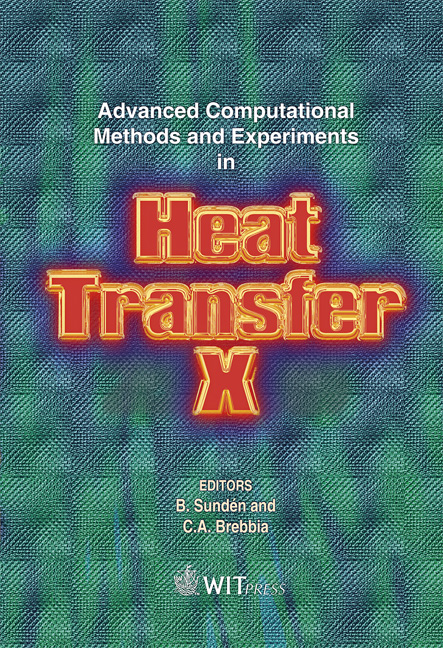Heat Transfer Between Shell And Rigid Body Through The Thin Heat-conducting Layer Taking Into Account Mechanical Contact
Price
Free (open access)
Transaction
Volume
61
Pages
10
Page Range
81 - 90
Published
2008
Size
689 kb
Paper DOI
10.2495/HT080081
Copyright
WIT Press
Author(s)
V. V. Zozulya
Abstract
A problem of heat conducting and unilateral contact of a shell with a rigid body through the heat-conducting layer is formulated. An approach consists in considering a change of layer thickness in the process of the shell deformation. For modelling thermoelastic state of the shell classical Kirchhoff-Love's model is explored. For modelling heat conductivity of the shell expansion into a polynomial Legendre series in terms of the thickness is used. Contact conditions that take into account possibilities for unilateral mechanical contact and change of heat transfer conditions between shell and rigid body are formulated. Numerical examples of the unilateral thermoelastic contact of the cylindrical shells and rigid body through the heat-conducting layer are considered. Influence of physical and geometrical parameters of the shell and heat conducting layer is investigated. Keywords: heat-conductivity, cylindrical shell, heat-conducting layer, mechanical contact. 1 Introduction Contact interaction is the most common way to transfer load from one body to another. In the case of contacting bodies having different temperatures between them heat-contact interactions take place. Therefore, not only the condition of the mechanical contact, but also conditions of the thermal contact have to be considered. Usually, perfect thermal contact is assumed, i.e. it is assumed that the temperature and the thermal flux of the contacting bodies in the contact area are the same [3]. In numerous publications [2, 4–15] it was shown that in many cases these contact conditions are not acceptable because they can not take into
Keywords
heat-conductivity, cylindrical shell, heat-conducting layer, mechanical contact.





